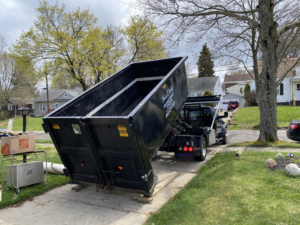Floor refinishing breathes new life into tired, dated or damaged floors. It involves sanding, staining and sealing the flooring.
Before undertaking the task yourself, you should carefully evaluate your hardwood floors’ condition. This includes assessing the type of floor, how worn the wear layer is and whether or not refinishing will be successful. Contact Floor Refinishing Westchester NJ now!

The sanding process is the most time-consuming part of floor refinishing. It involves sanding the entire floor with progressively finer grit sandpaper until the wood is smooth and ready for staining. Professionals use a drum sander to sand the main area of the room, and an edger for the edges and corners. They might also use a palm sander for any difficult spots. The sanding process leaves behind a lot of dust, so it’s important to wear protective gear for your eyes, ears, and lungs. It’s also important to vaccuum the floors and sweep them regularly as you work. The floor should be completely free of furniture and other objects before you sand, and it’s a good idea to cover outlets, vents and doors with plastic tarps.
Once the floor is sanded, it’s ready for staining or polyurethane. Stain gives the wood color, and if you want it to look richer, it’s best to mix two or more different stains together. Then you can brush the mixture into the corners and edges of each board to even it out. After the stain dries, you can re-sand and vacuum the floors. This is an excellent opportunity to make sure the sanding job was done properly.
After the floor is sanded, you should be able to see the natural wood grain through it, and it should be a nice even color. If the floor has been covered with any kind of wax, you’ll need to remove it by hand or with a chemical stripper before you refinish the floors. Be very careful around the heating grates and any tack strips that might be sticking up, as they are extremely flammable.
Then vaccuum the floors and sweep them again, then use a buffer or pad with a high grit screen to buff the floor once more. The sanding and buffing step will help to eliminate any scratches that might be left from the sanding, and it also helps to even out the transition between the sanded areas and the un-sanded sections of the floor. This is a great time to make sure you’re happy with the color of your floor, and you should have it sanded and buffed a minimum of three times before applying the polyurethane.
Staining
As a homeowner, refinishing your hardwood floors can add years to their lifespan. But even the most beautiful of floors will eventually wear out, and that’s when it’s time to refinish.
Refinishing involves removing the old finish and sanding the wood again. It’s important to use low-VOC sanding materials and let each coat dry thoroughly before applying the next one. The sanding process also removes the grain of the wood, making it smooth and even.
Once the sanding is done, the staining begins. This can be a tricky step, but it’s essential for getting the look you want. Staining isn’t just for color – it can also be used to cover up scratches, dents and other imperfections on your wood floor.
When it comes to choosing a color for your floors, there are endless possibilities. If you’re a little confused about what colors would work best with your home, consult a specialist to get advice.
After the stain is applied, it’s important to wait a few hours for it to dry. It’s also helpful to sweep up any remaining dust on the surface, as it can interfere with the final finish.
Staining your hardwood floors is a great way to add a pop of color and update the look of your entire home. Whether you’re looking for something subtle or bold, there are endless options available.
Before you decide to refinish your floors, it’s essential to determine what type of wood they are made from. Different types of wood have unique refinishing needs, and some cannot be refinished at all. You should also be aware that refinishing your floors might not be the best solution if they have already worn down to the point where they’re showing signs of rot or extreme wear and tear.
If your floors are in this state, resurfacing might be the better option. Refinishing is a much more cosmetic process, while resurfacing tackles structural damage and other issues. It’s important to have a professional assess your floors before deciding on which type of refinishing is the best option for your wood flooring.
Sealing
When done correctly, floor refinishing can make decades-old hardwood floors look like they were just installed. It’s a great way to transform old, dated flooring into a modern design aesthetic that is still warm and inviting. Refinishing is typically less expensive than replacing floors and can be completed in much less time, making it an attractive option for homeowners looking to upgrade their home’s appearance.
The first step of floor refinishing is sanding. This process removes the existing finish from the wood and prepares it for a new coat of stain. Professionals use a drum or belt sander and a dust mask to complete this task. They also carefully follow the direction of the grain to avoid damaging the surface of the wood and ensure a smooth finish. The sanding process can be tedious, but it is essential to the success of the final product.
After the sanding is completed, it is crucial to clean the entire area thoroughly to remove any debris and dirt. Then, the floors must be completely dried before sealing them again. This process can take a few days, so it is important to plan ahead and have all the necessary materials.
It is important to use a water-resistant sealer, as moisture can damage the wood. The sealer should also be compatible with the finish that is being used. A vinyl sealer works well with most oil-based finishes, while a polyurethane sealer is commonly used with water-based finishes.
Before applying the sealant, it is a good idea to do a test strip on a small area of the floor. This will help to determine if the sealant is compatible with the wood and if it will create a nice, even finish. It is also important to sand between each coat of sealant to achieve a smooth, uniform finish.
Once the sealer has dried, it is a good idea to sand the surface once more with a fine grit sandpaper. This will smooth any imperfections and ensure that the final product is even and free from any brush marks. It is a good idea to apply several coats of polyurethane to maximize the protection and longevity of the floors.
Applying the Finish
Once the stain is dry, it’s time to apply the finish. This is an important step that should not be skipped as it will create a strong bond with the underlying wood and protect the refinished surface from water, food and other household spills. It is also a great opportunity to touch up any spots where the stain was not properly mixed or applied. This should be done before you seal your floors and it is a good idea to do it a second or even third time to ensure color uniformity.
Applying the finish is a relatively quick and easy process. Just make sure the floor is clean and free of any dust or dirt particles. A HEPA-grade vacuum will help, but a good old fashioned broom should be sufficient for this step. Once again, make sure to use a broom that is not too coarse as this could damage the refinished finish. After sweeping, apply a thin coat of polyurethane with the grain and work in the direction of the grain. Allow each coat to dry thoroughly, and if needed, lightly sand or buff between each coating. You will want to wait at least 24 hours for a water-based polyurethane and a week for an oil-based one.
A few tips for this process:
-Use plastic tarps to cover any fixtures or other items that cannot be moved during the refinishing process, such as outlet covers and gaps under doors. It is also a good idea to apply painter’s tape around these areas and use latex gloves when working with the refinishing product. -Before applying each coat, use an applicator, such as a lambswool pad, a Duratool applicator or a roller to get the best results. -When using an oil-based polyurethane, you can add some additives to the product to reduce its VOC (Volatile Organic Compound) levels if desired.
While the refinishing process is going on, you should be able to live in your house as normal, although it will take some getting used to. A good tip is to put felt pads on the feet of your furniture so they don’t scratch your refinished floor.







